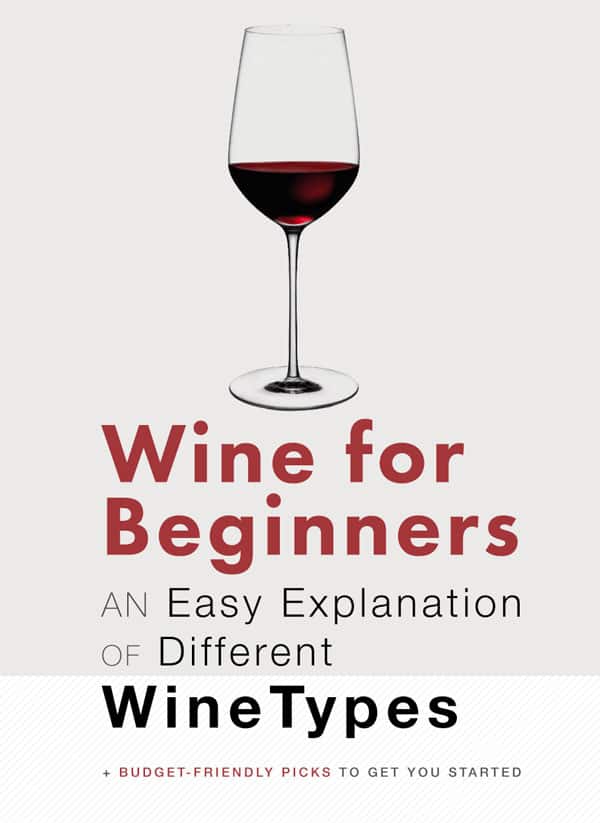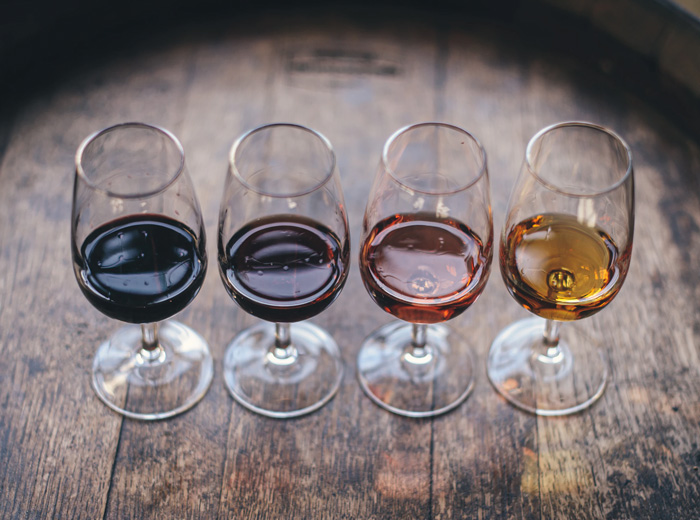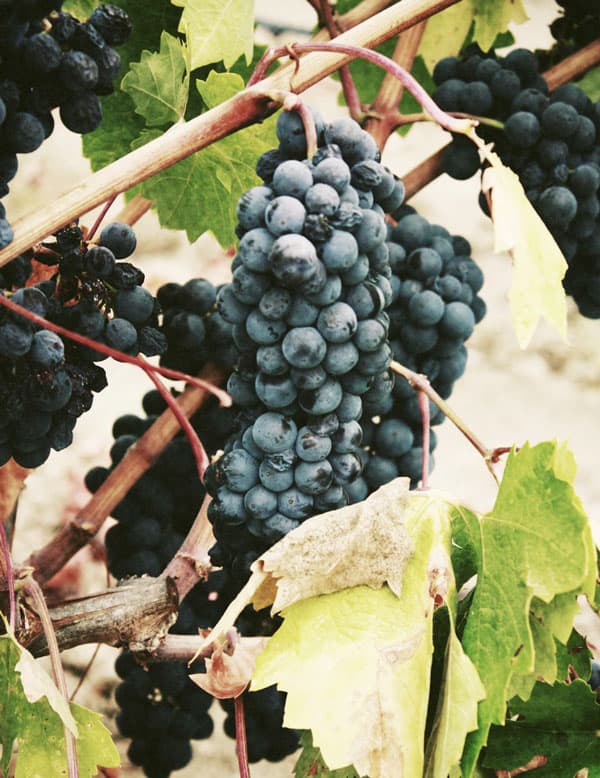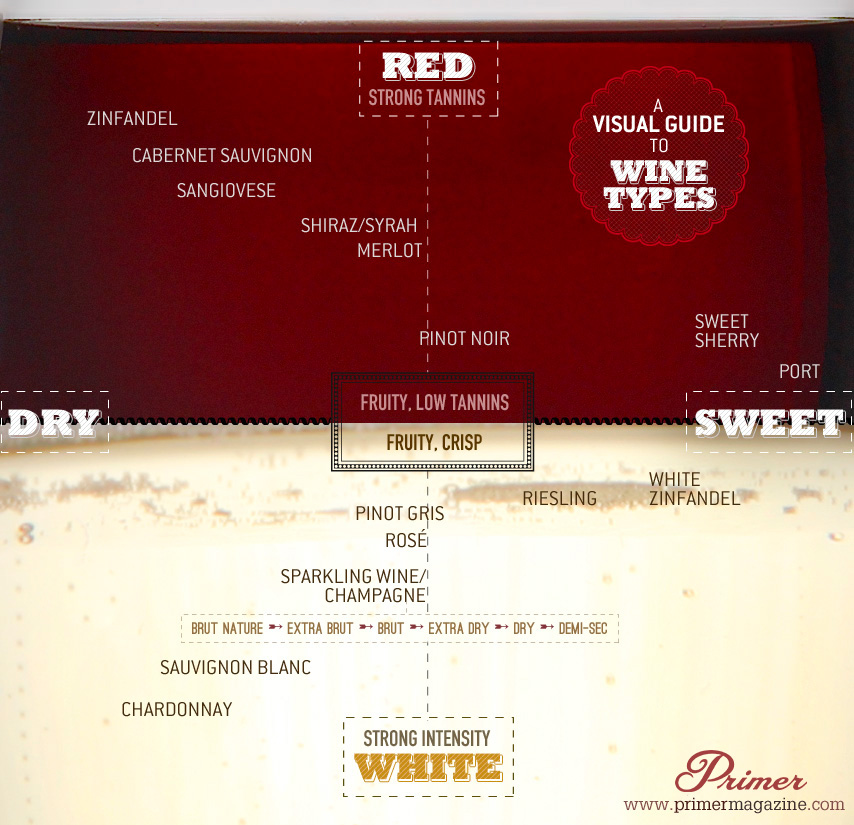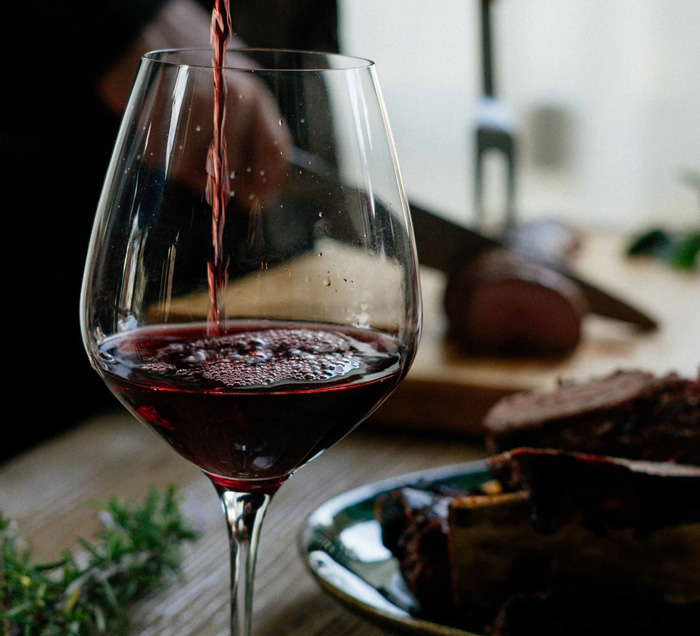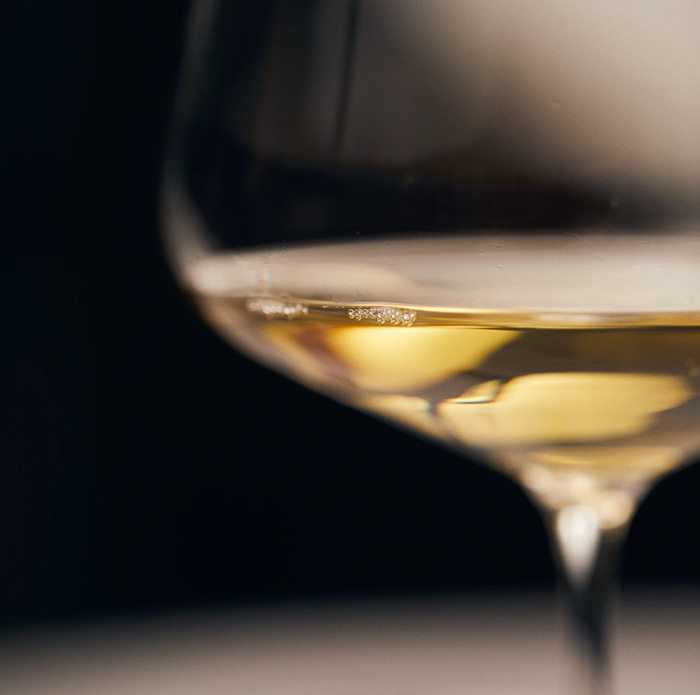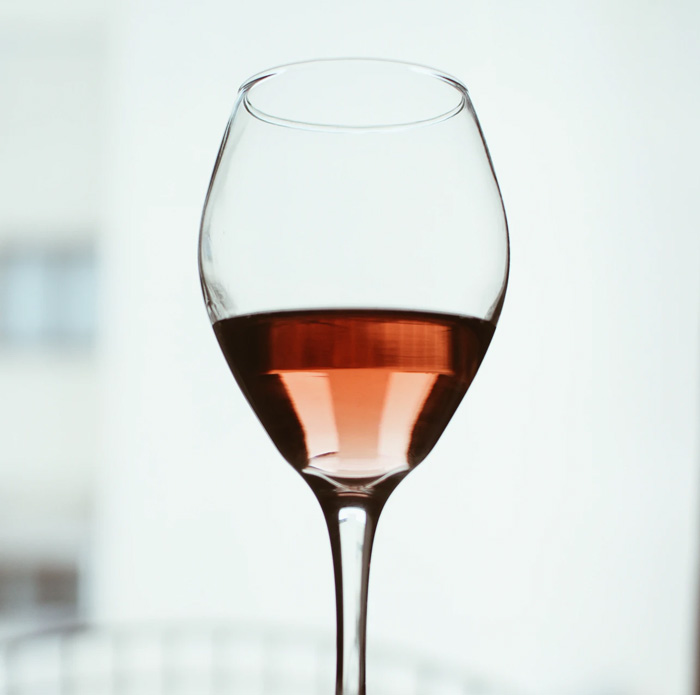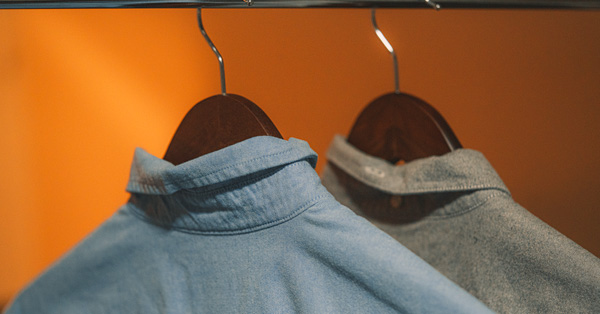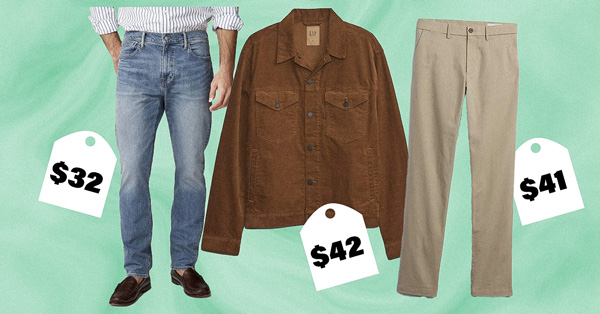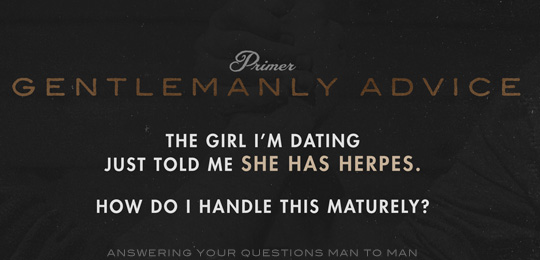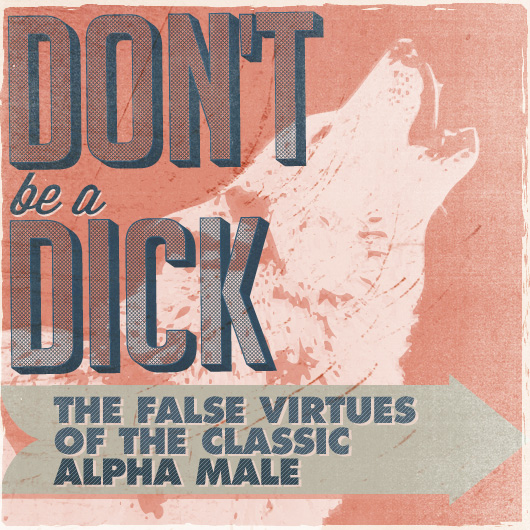Wine is intimidating.
There are dozens of different types of wine, each with their own ideal pairing foods. And then there's wine snobs – people who describe fermented grape juice as “unctuous.”
It's a shame, because wine is delicious. With a basic understanding of different types of wine and their tastes you can take a workaday meal and make it extraordinary…or transform a regular hangout into something truly memorable.
Expanded and revised 2022
As it turns out, there's a very good reason to learn about different wines and how they taste.
Understanding Wine Makes It Taste Better
Studies have shown that more complex descriptions of red and white wine actually make those wines taste better. Intuitively, this makes sense. If you have more vocabulary to describe what you're imbibing, your brain is better able to discern subtler flavors.
So we've put together a beginner's guide to different wine types that will break down the basics of what makes different wines, well, different, and the key descriptors you need to know to get the most out of whatever wine you're drinking.
What's The Difference Between Red And White Wine?
Okay, you probably don’t need any help recognizing a white wine versus a red wine. They look different and they certainly taste different as well. But it’s worth your while to understand why these types of wine look and taste so different. The culprit in both cases: the skins, and a little something they bring to the party called tannins. Remember the word tannin and what it means, because wine people talk about tannins a lot.
Tongue, Meet Tannins
What are tannins? Tannins are a naturally occurring substance in grapes and other fruits and plants (like tea, for example). The taste of tannin is often described as bitter, causing a dry and puckery feeling in the mouth. Tannins end up in your wine when the vintner allows the skins to sit in the grape juice as it ferments. This is also how wines get their color. Wines that have little or no skin contact end up pink or white, with far fewer tannins. Wines that ferment with the skins for a longer period end up red, with high tannin content. As you’d imagine, red grape skins have more tannins than white grape skins.
(Fun fact: you can get a white wine from a red grape by removing the skins from the juice immediately. All the color comes from the skins—even red grapes are white inside.)
Types of Wine
Red Wine Types
Tannin provides the backbone of red wine, which is why you might describe a red wine as “firm” or “leathery” or just plain “bitter.” Tannin also gives red wine texture, making it feel “smooth” and “soft” or “rough” and “chewy.” In general, the darker the wine, the higher the tannin and the “bolder” the taste.
Popular red wine varietals: Cabernet Sauvignon, Zinfandel, Merlot, Pinot Noir, Cabernet Franc, Malbec, Syrah (also known as Shiraz), Bordeaux, Barbera, Sangiovese
Types of White Wine
White wine has tannin, but not enough to make it the star of the show. Instead, white wines are backboned by acidity. That’s why you might say a wine is “crisp” or “tart.” Or, if there isn’t enough acidity, you might call a white wine “flabby” or “flat.”
Popular white wine varietals: Chardonnay, Riesling, Sauvignon Blanc, Sémillon, Moscato (Muscat), Pinot Grigio, Gewürztraminer
Rosé Wine
Rosé, or blush wine, is pink in color. It gets that way because it is allowed to stay in contact with the red grape skins for a relatively short time compared to red wine. On the spectrum between red and white, rosé is much closer to the light side, with relatively low tannin.
Popular rosé wine varietals: Pinot Noir, Zinfandel, Pinot Grigio, Sangiovese
There’s no law against drinking chilled red wine, but there’s a pretty good reason why you shouldn’t, and again, it’s the tannins. Tannins tend to taste bitter as they get cold, which means your darker red wines won’t taste their best when they are as cold as the Rockies. On the other hand, white and rosé wines, with their low tannin content, taste just fine when chilled—but avoid getting them too cold, or you’ll miss out on a lot of the flavor. Of course, it’s all a matter of taste. Some people enjoy their beer at room temperature and their pizza cold. Whatever gets you there.
What Is Dessert Wine and Sparkling Wine?
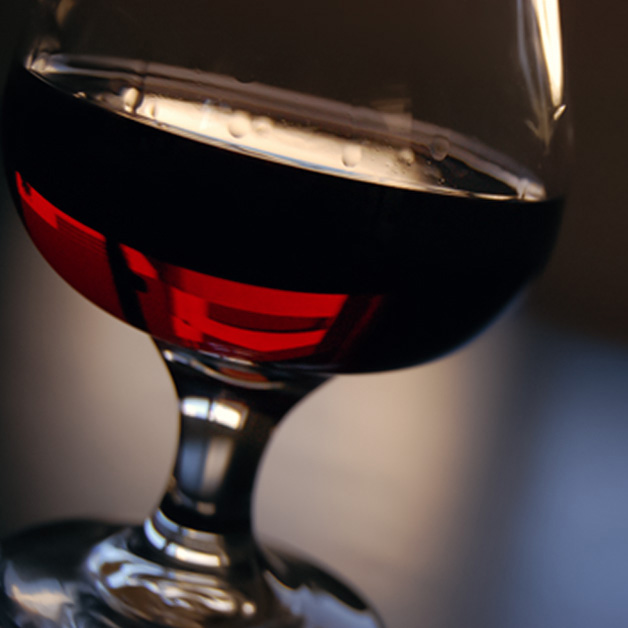
A glass of Port dessert wine
Red, white and rosé wines that have an alcohol by volume content of 14% or less are considered “table wine” in the U.S. (and “light wine” in Europe). That excludes anything that is sparkling or fortified (i.e., has added alcohol).
Dessert wine gets its name because it tends to be a sweet wine and comes after a meal. Alcohol (usually brandy) is added to a dessert wine so that it can retain more of its natural sugars, which are typically used up during the fermentation process.
Popular dessert wines/fortified wines: Port, Madeira, Vermouth, Sherry, Marsala
Sparkling wine is wine that has significant carbonation, which can occur as a natural part of the fermentation process or via carbon dioxide injection after fermentation. When reading sparkling wine labels, you’ll also encounter terms that indicate its sweetness/dryness.
Popular sparkling wines: Champagne, Prosecco, Cava, sparkling rosé, Moscato, Lambrusco
Sparkling wines from driest to sweetest:
- Brut Nature
- Extra Brut
- Brut
- Extra Dry/Extra Sec/Extra Seco
- Dry/Sec/Seco
- Demi-Sec/Semi-seco
- Doux/Sweet/Dulce.
Sparkling wine is made from a wide range of red and white grapes. Champagne proper is made from Chardonnay, Pinot Meunier and/or Pinot Noir.
How To Describe The Taste of Wine
So, to recap: red wine is red because it was fermented with the skins, making it more tannic. White wine has less tannin, and is more acidic. Dessert wines have higher alcohol content and are usually sweeter, and sparkling wine has bubbles.
Easy, right? Of course not. Stopping at red vs. white wines would be like ending a discussion on vehicles at cars vs. trucks. If we’re going to peg the kind of wine that you enjoy drinking, we’re going to have to get a bit more specific. Yes, that means we’re going to have to talk about how a wine tastes.
This is where wine drinkers lose most of us. There is perhaps nothing more subjective about humanity than taste, and trying to find common ground when talking about wine seems ill-fated from the start. But in spite of the glut of snobby descriptors for wine that you’ll stumble across, there are a few terms that mean pretty much the same thing to everyone.
What Are The Four Key Wine Descriptors?
Sweetness.
Needs no explanation. The opposite of sweet is dry. A wine can also be medium-dry or off-dry (i.e., just a hint of sweetness, but almost too faint to move the needle).
Acidity.
We already talked about this. Acidity is a big deal for white wines, and it makes them refreshing and crisp (or “sour” if it's overdone). Lower acidity makes a wine taste “fat.”
Tannin.
Another one we’ve already covered. It’s all about the tannins for red wine. High tannin wines are astringent, maybe even bitter and inky. Lower tannin wines are smooth and soft, and depending on your tastes, more drinkable.
Body.
This refers to the perceived “weight” and viscosity of the wine. A full-bodied wine feels thick, coating the sides of the glass as you swirl. A light-bodied wine is almost like water. A medium-bodied wine is in-between.
The best way to wrap your taste buds around the four primary wine descriptors is to make yourself a strong cup of tea. Sip it black, without anything added. That’s what something very tannic will taste like (i.e., bitter). Now, add a squeeze of lemon juice and taste it. That’s acidity joining the party. Combined with the tannic taste, it should taste astringent. Now, stir in some sugar for some sweetness. This mellows everything out to make it taste soft.
There's a fifth thing to be aware of when describing wine—flavor. Unlike the four key descriptors, flavor encompasses every descriptor under the sun and is far more subjective.
Flavors.
If you’re not sure, don’t bother diving into descriptors like graphite, barnyard, and other flavors you’ve (hopefully) never tasted. Instead, stick to the most relatable flavors like fruity, earthy, spicy, smoky, or flowery. You may also experience other recognizable fruity flavors such as citrus, apple, peach, black cherry, or pear.
Not sure which is which? Go to a wine tasting or visit a wine store and simply ask for some contrasting bottles of wine. Say, “Give me something fruity and give me something earthy.” Or, “Give me a smooth red wine and a bold red wine.” Drinking them back-to-back will give you a good feel for what these terms mean.
In the wine world, you’ll inevitably hear a lot of discussion about “oak” or “oakiness” or “an oaky quality.” Oak flavor infuses wine when it is either fermented or aged in oak barrels. If you’re a whiskey drinker, you already know how much of a big deal oak can be. With wine, oak is just another parameter for taste. Some say oak adds qualities like smokiness, clove, spiciness, or vanilla tones. Others just plain don’t like oaky aromas. If that’s you, go for a wine with low oaky character. Many wines are fermented and aged in stainless steel casks, and are thus not oaky at all (unless the winemaker adds oaky essence after the fact).
Hot tip: Pair oaky wines with salty food. Salt cuts the bitterness of oak in much the same way that salt makes shots of tequila go down smoother.
Which Starter Wine Should You Buy?
It’s best to start simple so you can isolate what you’re tasting and what it is about a wine that you like or dislike.
Start in the $10 to $15 price range. Most wines at this price point are “typical” of their variety and region. Some say that complexity doesn’t start until the $25 level or $35 level, but while you’re in the exploratory phase, it’s better to spare your wallet. That being said, you can find good bottles of wine under $10—it’s just a bit harder.
Again, it’s hard for a beginner to tell how a wine will taste based solely on the varietal. So, above all, don’t be shy about asking for help. Your best bet is to walk into the store and ask for the kind of wine you’re interested in trying. Say, “I want a dry, light-bodied white wine” or “I want to try a full-bodied red.” Or, you could even mention wines that you’ve enjoyed in the past and ask for something similar.
Another good tactic is to ask for a “typical” varietal, e.g., “Find me a typical Pinot Grigio for $15.” Here’s a quick rundown that might help you decide:
Popular White Wines
- Chardonnay – Fruity, buttery, with a velvety feel that’s atypical to dry white wines.
- Pinot Grigio (aka Pinot Gris) – Simple, light-bodied, dry and crisp.
- Riesling – Usually very sweet, with intense fruit flavors. Much lighter than chardonnay.
- Moscato – Fruity, and often sweet.
- Sauvignon blanc – Dry, tart, and acidic, with herbal flavors as well as tropical fruit.
Popular Red Wines
- Cabernet sauvignon – Full-bodied with herbal notes. Younger cab has rich flavors of currant.
- Merlot – Fruity, spicy. Very soft, less tannic than Cabernet sauvignon.
- Pinot noir – Delicate and fresh, very soft tannins with fruity aromas.
- Zinfandel – Typically zesty, ranges from medium- to full-bodied and dry to off-dry.
What's the “Bulleit” Of Wine? A Few Picks…
Picking an actual wine and feeling confident you're getting a decent bottle is, of course, a major barrier for anyone. We've been wondering: What wines are similar to Bulleit Rye, as in: affordable, widely available, and generally regarded as good?
It's a difficult question to answer, since annual variations in climate, grape quality, and a dozen other factors make the year-to-year quality of a wine vary more than a grain-based alcohol. That said, our research indicates these picks are worth consideration as safe, reliable value for your dollar:
Whites
- Chardonnay: Kendall Jackson Vintner’s Reserve California Chardonnay (approx $13)
- Chenin Blanc: Pine Ridge Chenin Blanc + Viognier (approx $14)
- Sauvignon blanc: Brancott Estate Marlborough Sauvignon Blanc (approx $12)
- Riesling/Pinot Gris/Moscato blend: Hugel et Fils Gentil Alsace (approx $14)
Reds
- Cabernet sauvignon: Beringer Founder’s Estate California Cabernet Sauvignon (approx $10)
- Merlot: Chateau Ste. Michelle Columbia Valley Merlot (approx $20)
- Zinfandel: Bogle Old Vine California Zinfandel (approx $12)
Understanding Wine Is A Process
Take the next month to buy one new bottle of wine a week (or have a glass out with dinner or at a wine bar). Uncork and take a few moments to taste and describe it using the descriptors above. Make sure you try a different type of wine each week and repeat the same process. At the end of the month you'll start to feel more comfortable with the vocabulary of wine, which can have a profound effect on your enjoyment.
At the end of the day, you really can’t make a wrong choice. As long as you pay attention to what it is that you don’t like about a wine, each bottle will get you closer to what you do like. Take it one glass at a time and don’t be afraid to admit it if you can’t quite put your finger on something. Focus on enjoying your wine—that’s the entire point.
Do you remember the first glass (or box) of wine you really enjoyed? Share it in the comments below!
A Drinking Man's Intro to Wine
- The Non-froofy Side of Wine: A Drinking Man's Intro to Wine
- Learn About Wine: An Easy Explanation of Wine Types
- How to Order Wine on a Date
- How to Serve Wine
- A Visual Guide to the Common Glasses of Wine, Spirits, Beer and Cocktails
- A Guide to Wine Vintages
- The 10 Minute Guide to Port
- Wine for Beginners: An EASY Explanation of Different Wine Types



